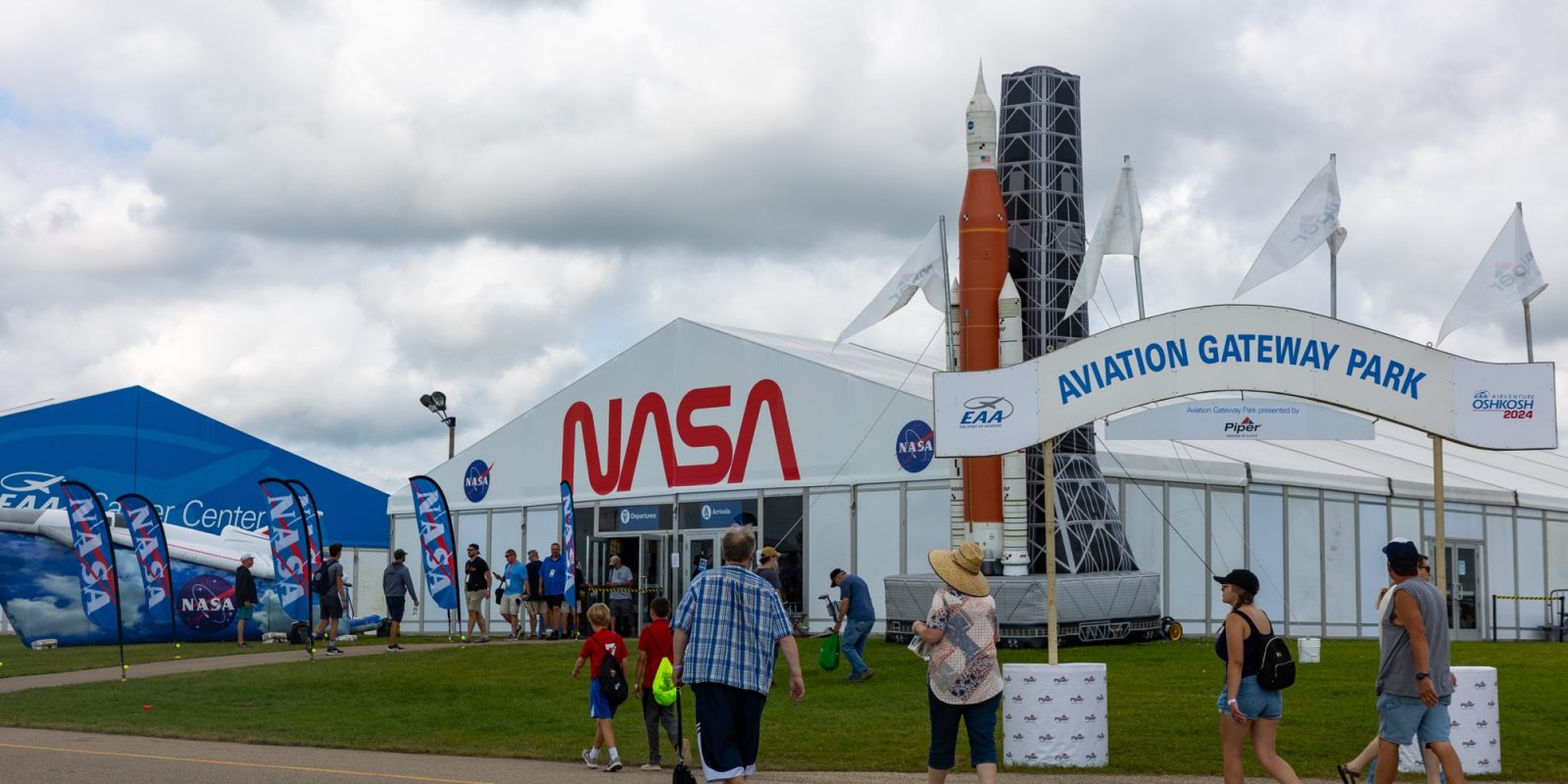
With the week wrapping up, here’s what NASA is presenting to the public at EAA Oshkosh 2024. Full of research and development, NASA’s Bob Pearce, Associate Administrator for the Aeronautics Research Mission Directorate, gave us some background into ongoing and upcoming projects.
The world’s largest fly-in convention, EAA Oshkosh brings in hundreds of thousands of enthusiasts to Northern Wisconsin, also making Wittman Regional Airport the busiest in the world (just for a week).
“This is where people dream about the future. This is where folks want to understand what’s next and so NASA comes here to help show them what’s next,” Pearce said. The agency has hosted talks all week about different programs its working on in the world of aviation.
However, the agency hasn’t backed away from the space exploration we all know and love it for. A towering inflatable SLS rocket can be found outside its booth in Aviation Gateway Park and inside, full size cut outs of the Artemis 2 crew.
Later on Friday night, the agency plans to have a discussion about the Artemis 2 missions at one of the theaters onsite.
NASA really wants to go fast
What has been the biggest focus this year was NASA’s X-59 supersonic aircraft. We detailed about this earlier in the week, the aircraft has been long in development but is finally getting ready to begin flights within the next year.
“This is our first purpose-built x-plane in many decades. In the end, this airplane is a means to an end. It’s basically a noise generator.” Everyone, Pearce included, gets very excited talking about the X-59. I mean who wouldn’t? Bringing supersonic flight back over the US for all of aviation could mean a lot of cool new opportunities for commercial and private aircraft makers.
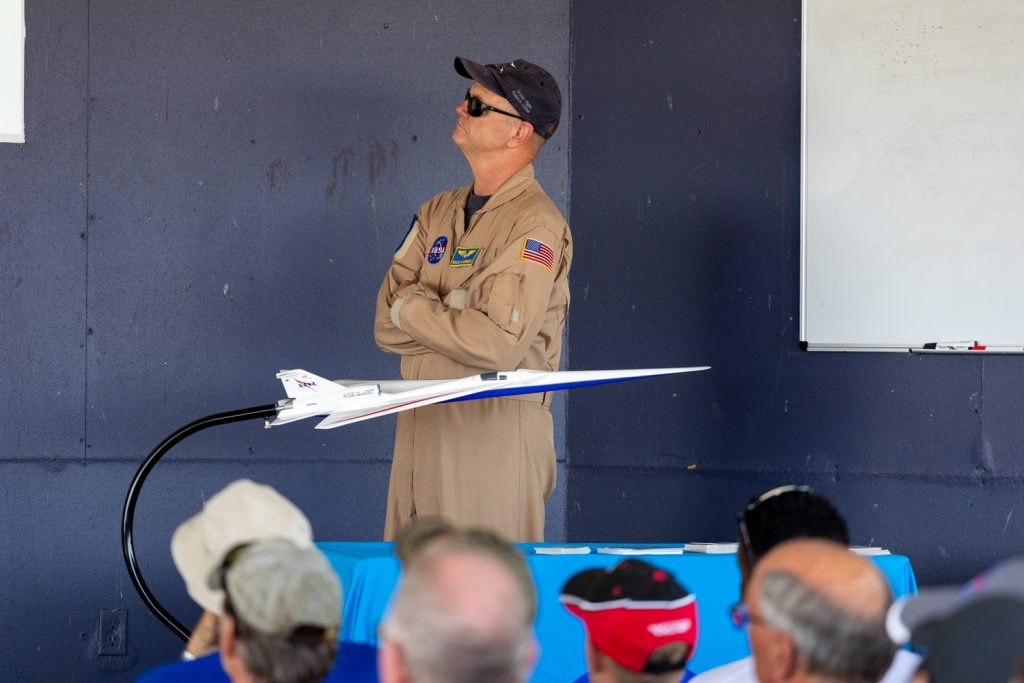
The aircraft is currently in the system testing phase of development, the phase right before first flight. In a few weeks Pearce said the engine will be turned on for the first time and as the months go on they’ll turn on more and more before they get to first flight.
The aircraft is a combination of other aircraft parts surrounded in a custom airframe. Allowing NASA to save money on developing those parts and more time on the ones that are new. “So as long as you know what those components are before you start the design, now you can design around those things. There may be a few compromises because it’s not exactly the way you might want it, but that wasn’t too bad.”
Drones and airspace management
While we might think about planes, engines, and flight testing as NASA components, what you might not think about is airspace management and drones. NASA has been a long time partner with the industry and FAA to development a better air traffic management system for drones.
The UAS (unmanned aerial systems) traffic management (UTM) system they developed is something you’ve probably already used if you fly a modern consumer drone. NASA has taken it one step further and looked out how this can be used in areas where the airspace can be even harder to manage, like wild fires.
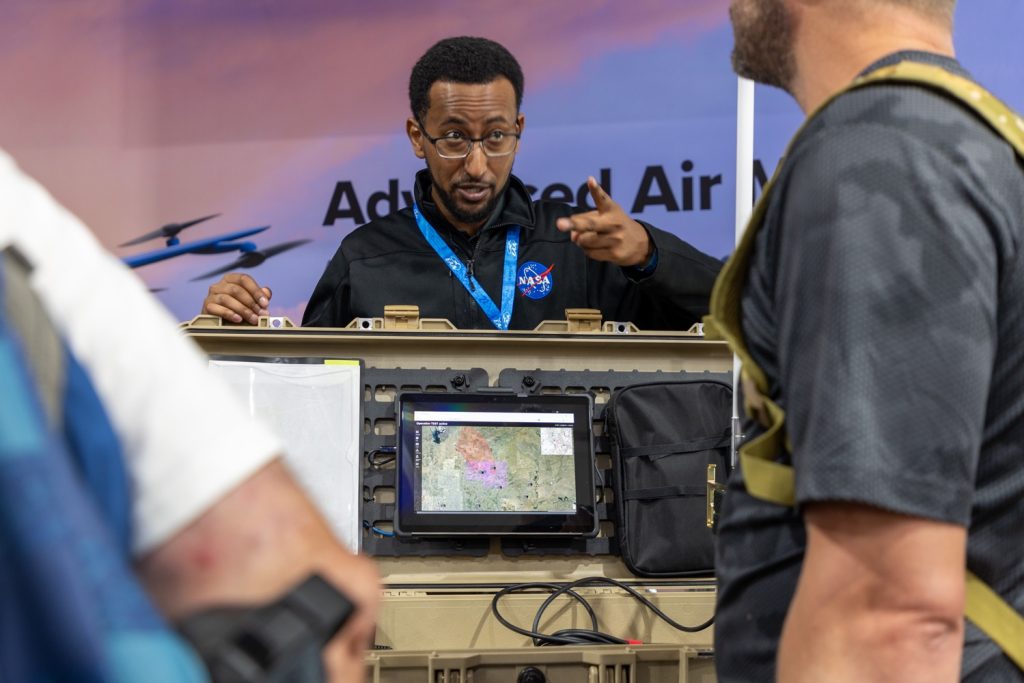
A UTM in a box solution can be set up remotely and allow for advanced control in restricted airspaces that usually come when a wildfire is present. “This promises to allow you to track all the airplanes in the airspace. And so you can make sure there are no collisions [and] they can all do their specific jobs,” Pearce explained.
Creating a plane that burns fuel better
Also detailed earlier in the week was NASA’s part to support the nation’s goal to reduce emissions in the aviation sector. The start of this is HyTEC, an engine program hoping to build an engine that burns more fuel, efficiently.
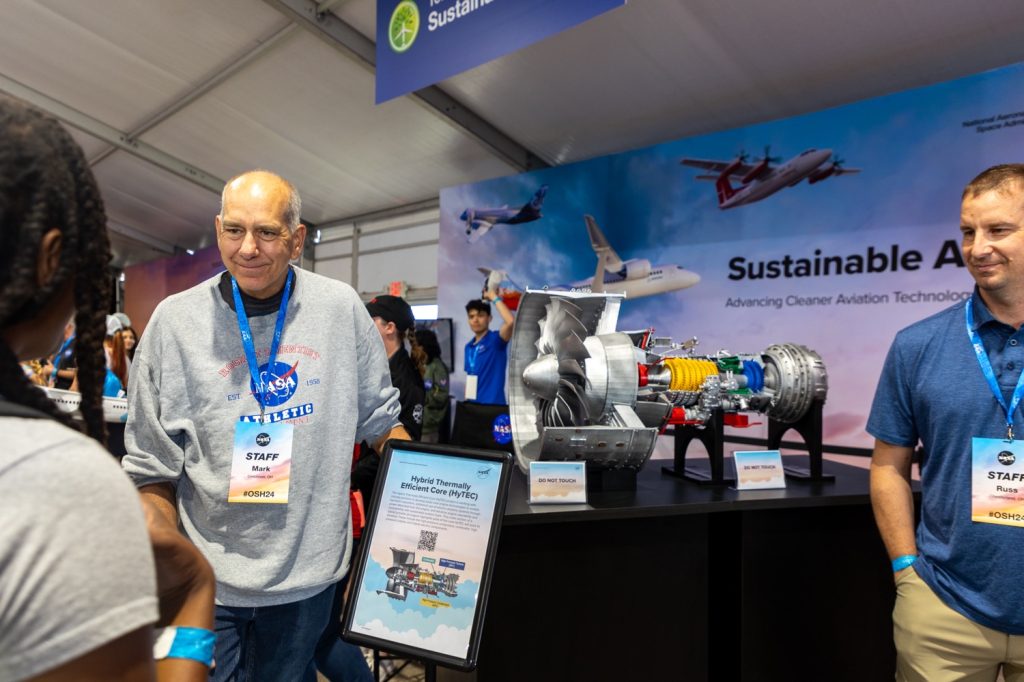
This can be stacked with other programs, like the X-66 aircraft that features a new wing design for better engine and lift performance. “So there’s a lot of individual elements of technology that lead to that efficiency, but they have to work together. They’ve gotta be synergistic.”
Stacking better engines, aircraft designs, and the material used inside the aircraft, can all lead to lower emissions and better aircraft for us to fly the future.
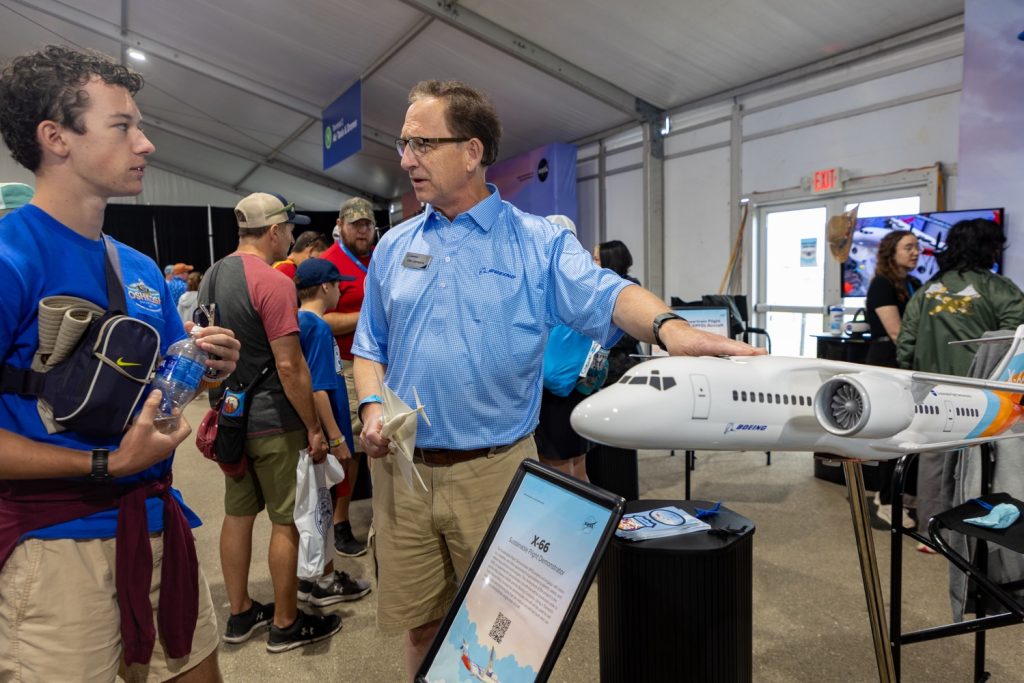
As you can expect, NASA was one of the more popular exhibits at EAA with their forums regularly being packed by attendees. Maybe they were only second to the B-52 Stratofortress as the center piece on Boeing Plaza and the daily airshows that take place every afternoon. Either way, where there is something flying in the sky, NASA isn’t too far behind.
FTC: We use income earning auto affiliate links. More.




Comments